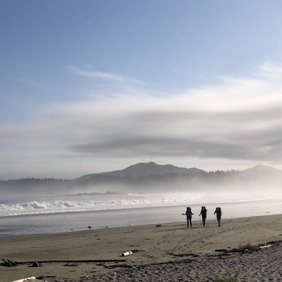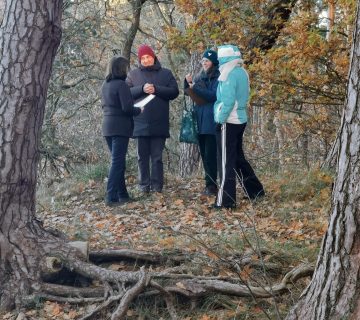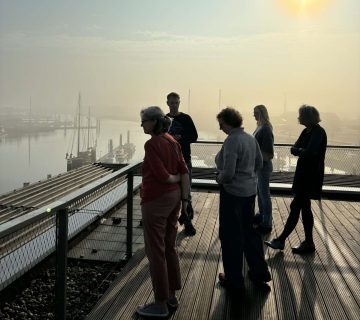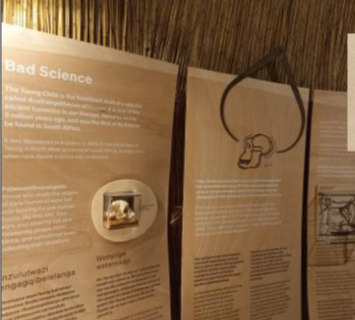Interpretation is experiential when the interpreter uses a recognisable activity as the structure of the programme and imposes passive listening on the audience less than 10% of the time. It uses traditional activities, like snorkelling or cooking, whisky tasting or birding, as a basis for uniting visitors with an interpretive theme.
Experiential interpretation has measurable goals: affective, behavioural, learning, satisfactions, revenue, and so on. It’s the learning part that sets it apart from purely recreational tourism. And it’s the learning part – getting that part right, without being didactic – that is hard. That’s the nut we need to crack!
Other qualities of experiential interpretation
Experiential interpretation often involves the acquisition of skill along with the acquisition of knowledge. It expands personal horizons for the participant, creates a sense of accomplishment and can facilitate personal transformation.
It has high memorability, which results from:
• challenge (as audience appropriate)
• agenda fulfilment (meeting the visitor’s expectations completely)
• elements of surprise and delight
• social exchange among the participants and with the interpreter
It honours essence of place; it brings that essence to life through activity. It connects people to place. It is polished and professional throughout the visit cycle, from wishing to planning to execution to remembering.
It is high-yield and low-ratio, with relatively small groups, usually paying a relatively high price. This quality makes it an attractive tourism product by that industry’s standards.
It is personal: the interpreter establishes a relationship with individuals, not with the group as a generic body. It often also includes meaningful encounters with the local community.
It is multi-sensory and often incorporates food or beverage as a way of facilitating group bonding and fostering an element of surprise and delight.
It may use post-activity interpretive dialogue as a means of debriefing, making meaning, and fostering interpersonal bonding.
It facilitates remembering though mementos, shared photography, and/or through a continued relationship among the participants after the event.
It is environmentally and economically sustainable; it adheres to principles of sustainable tourism.
When good interpreters make bad experiences
In looking at the above and pondering my long career, I’ve started looking back at when I’ve succeeded and when I’ve failed. I can’t lie: the failures are many! Where have I gone wrong and how can we learn from that?
It doesn’t work when we use the activity as a tagged-on reward for sitting still and listening. School programmers are notorious for this (and I say this as a former full-time school programmer). You get the group in the great outdoors, all dressed for the weather and ready to go, and then… sit them down on a rock and talk at them for 25 minutes as if they were in a classroom. Fail. Not experiential interpretation; not good interpretation of any kind.
‘But I need to get the theory across first!’ Sure. But you could establish the theory in your pre-visit package. Or you could construct the activity in such a way that it illustrates your theory, without passive listening. Easy? No. Interpretive? Oh, yes! If you’re imposing passive listening on your audience, you’re not doing experiential work. And you’re not making the most of your visitors’ precious time with you in the outdoors.
It also doesn’t work when your theme and your landscape work against each other. When we fail to match our landscape with our theme, we often feel the need to fill in the blanks with verbal presentation augmented by interpretive media. Another fail. And I have been so guilty of this in the past.
Does this sound familiar? Your manager assigns you a bird walk at 2pm on an August afternoon. Desperate for something, anything, to offer the visitor at this time of day when you don’t expect birdlife to be present, you bring recordings, pictures, an iPad loaded with video… and you stop every few minutes on that utterly-bird-devoid trail to talk about what isn’t there. The experience is essentially no different than what you could offer in an amphitheatre or in a blog post, except for the insect bites and the uncomfortable standing position that your visitors experience.
This is not experiential interpretation. It’s not good interpretation in any form, but it happens all the time. We hold wildflower walks when the flowers are well past bloom; we lead history walks on nature trails that have zero evidence of history because we have history in our interpretive plan and that trail is really close to the visitor centre and it’s really convenient and we’ve got lots of great pictures… But, nope, this isn’t experiential, and it is just poor, lazy interpretation. When your landscape doesn’t bring your theme to life, you either need a new theme, or you need a different landscape. You will never facilitate experiences until you reconcile the two.
Can a history walk qualify as experiential interpretation? Sure, if the landscape itself is bursting with evidence of your history, and if you come up with creative, active ways to allow your visitors to discover it. Archaeological digs, for example, can be highly memorable and satisfying (and profitable).
Can birding be experiential? Of course. Picture a morning bird walk with the birds fairly dripping off the trees, or an evening experience with thousands of geese thundering in against the sunset. Picture yourself challenging and encouraging your visitors through their observations. Picture yourself and your guests, with a cup of coffee or wine afterwards, rehashing it with them. Picture yourself sharing photos and memories with them weeks after the experience.
Experiential interpretation begins by finding the authentic touchstones in your landscape that bring your theme to life. It unites those touchstones with a compelling theme and a relevant activity. Steve van Matre (the American environmental activist and author, founder of the Earth Education movement and chair of the Institute for Earth Education) describes the interpreter as the choreographer or stage manager of a carefully-designed experience. The work of the interpreter is largely done behind the scenes, before the guests arrive. The art of the interpreter lies in the concealment of the art. For those of us with big egos it can be a hard pill to swallow – until you see your audience fully engaged with their activity and their landscape. Then you feel like a hero!
Don Enright is a freelance interpretive planner and visitor experience advisor based in British Columbia. He works collaboratively with parks, historic sites, museums, aquariums and other organisations to help bring their stories to life. He can be contacted at: donenright@donenright.com
[This article first appeared on Don’s blog in December 2019: https://www.donenright.com/blog/]
To cite this article:
Enright, Don (2019) ‘What makes experiential interpretation?’. In Interpret Europe Newsletter 4-2019, 4.
Available online: www.interpret-europe.net/fileadmin/Documents/publications/Newsletters/ie-newsletter_2019-4_winter.pdf




